 Listen to Forensic Entomology Audio Introduction
Listen to Forensic Entomology Audio Introduction
What is Forensic Entomology and Who Uses It?
Forensic entomology is the study of insects associated with a body after death, mainly to determine time since death. It is the use of insects, and their arthropod relatives inhabiting decomposing remains, that aid legal investigations. Therefore, in its broadest sense, forensic entomology actually refers to any legal activity that involves insects or other arthropods. There are diverse applications of forensic entomology; however this treehouse will focus only on the discipline’s application within crime scene investigation.
Insects serve a variety of purposes throughout the world, and their application within the realm of forensic entomology is invaluable. When the opportunity to utilize information left behind by various insects is available, determining a more precise time since death is very useful to investigators. However, when this information is not made use of, or available, determining an accurate time line becomes more difficult, and virtually impossible in certain circumstances (i.e. when several weeks or months have elapsed).
Why I Study Forensic Entomology
There are several reasons I chose to study forensic entomology, the most obvious being my interest in forensic anthropology. I am a biological anthropologist who has studied various aspects of forensic anthropology, and by no means am I an entomologist or “expert” in this area of study. However, learning from forensic anthropologists who work in the legal sector has provided me with an up-close and personal look at what these insects look like, the destruction they cause, and how they can contribute to a more complete picture of the circumstances and time-line surrounding the death of an individual. Although I would hesitate to say that I “love” maggots and other forensically important insects, I will confess that I now have an appreciation and respect for their ability to provide fascinating and important information that can contribute greatly to the field of forensics.
What is Forensic Anthropology?
In the most general sense, forensic anthropology is the application of anthropological and skeletal analysis to medico-legal issues. Medico-legal refers to the ability of medical science to offer insight on legal matters, such as the identity of deceased individuals and circumstances of death. Most commonly, forensic anthropologists are called upon to aid legal investigations by assisting in recovery of human remains, conducting skeletal analysis for the purpose of identification, describing the nature and extent of skeletal trauma, and potentially providing expert testimony in a court of law. Increasingly, forensic anthropologists are being called upon to work internationally to help identify victims of wars, and generally for purposes related to human rights issues, mass disasters, and soldiers missing in action. As a result, you can see how forensic entomology has a lot to offer forensic anthropologists in terms of providing a time-line of the circumstances surrounding death.
Using Forensic Entomology to Determine Time Since Death
Insects are usually the first to arrive at a death scene. Determining time since death is of paramount importance in a death investigation. Knowing time since death directs the police investigation into the correct time frame. Additionally, this type of information can help support or refute a suspect’s alibi, help in the identification of an unknown victim, and improve efficacy of the police investigation. Most important, this information is vital in determining the time line prior to death, the victim’s whereabouts, the victim’s immediate associates, and other useful information. Although pathologists can estimate time since death based on several scientific parameters (i.e. body temperature, rigor mortis, stages of decomposition, etc.), these parameters are often only useful for several hours after death, and become less valuable as the hours pass.
Due to the varied ways in which death takes place, victims may not be discovered for days, weeks, or even months. This is where forensic entomology can provide the most accurate, and frequently the only method of determining time since death when several days have elapsed. Forensic entomology can also be used to determine whether the body has been moved from one site to another, whether the body has been disturbed after death, the position of a body when death took place, and the presence of wounds. However, forensic entomology is primarily used to determine time since death; therefore this treehouse will revolve around this area.
The presence or absence of insects, and their developmental rates and ecology, is combined with information about the scene and then used to determine time since death. It is important to keep in mind that insects themselves do not determine the exact time since death, and can only be used to determine how long a body has been inhabited by insects. Further, the length of time that passes before insects colonize a body will be dependent on several factors and can be estimated, but not determined exactly. As a result, insects can help refine a time frame for the circumstance surrounding a death, but can not pin-point an exact time.
There are two main ways of using insects to determine time since death.
- The first method uses developmental rates, with respect to temperature of the first insects to colonize the remains. This method is most valuable in the first few weeks after death.
- The second method is based on the changes in the successional character of the insect community colonizing the remains over time, and is most valuable from roughly 3 weeks to one year or more after death.
After one year, insects, and the evidence they have left behind, may still be of value in narrowing down the season of death. Yet, after one year, a diminishing amount of information can be extrapolated from this point on.
Evolutionary Importance of Insects
Insects have a very long evolutionary history (approximately 250 million years), especially compared to humans (approximately 300,000 years), and throughout this great history insects have diversified greatly in both form and development. Currently, there are approximately 700,000 described species of insects, and it is estimated that there may be 10 million more yet to be discovered.5,1 Within this vast amount of diversity, two major groups of insects are most commonly attracted to dead remains, and provide the majority of information aiding forensic investigations. These two major groups are:
- The beetles
- The flies
Although both groups are diverse, beetles have far more known species than any other animal group, insect or otherwise. Additionally, beetles and flies have distinctive external structures, and develop in significantly different ways, thus allowing for identification fairly easily in the field.
Although many types of arthropods are found in association with bodies, the majority of these are typically opportunistic feeders taking advantage of the circumstances. They are made up of both scavengers feeding on decaying material and predators feeding on the species that have colonized on carrion. The following sections will provide a brief description of the flies and beetles most commonly found in association with a body and decomposing remains.
Flies
Flies belong to the order Diptera and can be found in almost any habitat. Flies are important as scavengers, removing decomposing plant and animal material from the environment. Some are predators and parasites of other insect species, and others aid in the pollination of plants. Flies are among the insects that go through complete development, meaning the larval stage appears quite differently from the adult form. The larvae of flies are called maggots and most are cream colored, soft, lack functional legs, and lack a visible head. The pupae of flies are often overlooked because they resemble rat droppings or the egg case of cockroaches. Unlike often hard to distinguish fly pupae, most adult flies appear metallic green or blue and are easily recognizable, thus not commonly overlooked.
Below are images of maggots (flies in larval stage) commonly found in association with decomposing remains.
Diptera. Maggots (fly larvae) ©

Diptera. Maggots (fly larvae) ©
Diptera Pupa. Fly Pupa ©
Beetles
Beetles belong to the order Coleoptera, which contains about a third of all known insects (approximately 300,000 species). Their feeding habits vary greatly, and they can be predacious, scavengers, or even vegetarians. Like flies, beetles also go through complete development, thus they have a larval stage very different from the adult form. Although the larvae of a large number of blow fly species look very similar, the larvae of beetles (called “grubs”) often look very different from one species to the next. Beetle larvae recovered from human remains can be easily differentiated from maggots as they have 3 pairs of legs and the maggots found on decomposing remains will not have any legs.5 The bodies of beetle larvae may range from almost white, robust, and hairless, to dark brown, slender, and quite hairy. The number and appearance of adult beetles that can be found on human remains is extremely diverse and not all will be shown here, yet the following images are examples of some common carrion beetles found on human remains.
Below are images of beetles commonly associated with decomposing remains. Note the variation in life cycle stages present among the beetle images as well as the differences in the larval stages of "flies" versus "beetles."
Dermestid larva. Beetle in Larval Stage ©
Dermestid. Adult hide beetle ©
This is a late-arriving species and tends to be a specialist scavenger known for feeding on tougher parts such as skin and tendons as the body dries out. The dominant late stage scavengers include the hide beetles (Dermestidae) as seen above, and the ham beetles (Cleridae) shown below.
Clerid (Ham Beetle). Adult ham beetle ©
COMING SOON……Come back soon to listen to my story about consulting with a professional entomologist on the specimens I collected for this treehouse. I found out some surprising facts!!
Conclusion
Although the above has demonstrated the usefulness and application of forensic entomology, this area of expertise has been relatively unapplied in legal contexts throughout the United States until relatively recently. I am not completely certain why this is, but I believe there are at least two reasons for this. One, there has traditionally been a lack of trained professionals hired to collect and interpret the results. Two, in the past, there has been a lack of time allotted at the site of a body for comprehensive documentation and collection of insects. Without the former two steps performed, not only is information lost that can help refine time since death, but an incomplete picture of the circumstances surrounding death is left out. However, with more and more entomologists consulting with local authorities, the future of this important field will undoubtedly grow.
Information on the Internet
- Animal Planet Buggin' with Ruud: Don't Tread on Me
- Discovery Channel Forensic Entomology: A Bug's Story
- Natural History Museum On Maggots and Murders: Forensic Entomology
- Forensic Entomology Insects in Legal Investigations
- American Board of Forensic Entomology
- Entomological Society of America
- American Academy of Forensic Sciences
- Video Clip Natural History Museum: Forensic Entomology
- Video Clip (Stages of Decomposition) Australian Museum Online
- Video Clip (Maggot Consumption) Australian Museum Online
- Decomposition. What happens to the body after death? Australian Museum Online
- Profile of a forensic entomologist Cornell Chronicle
- The Body Farm University of Tennessee Forensic Anthropology Center

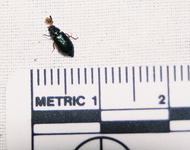
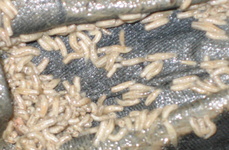
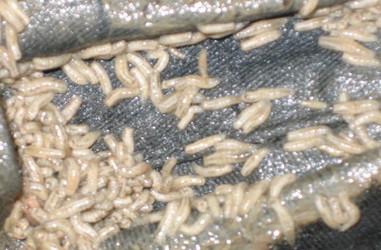
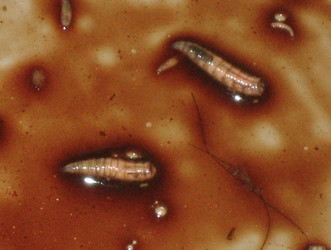
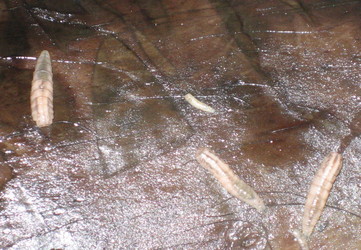
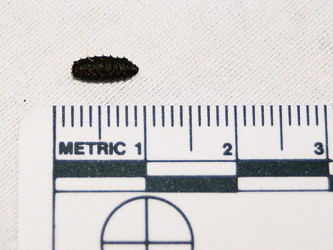
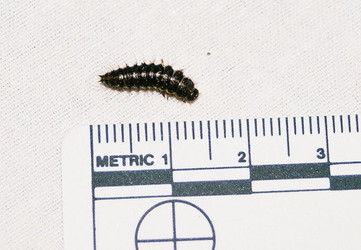
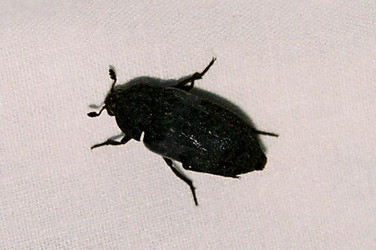
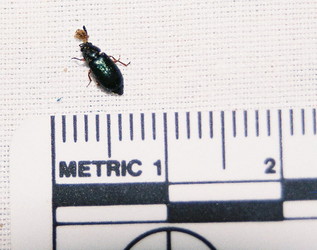



 Go to quick links
Go to quick search
Go to navigation for this section of the ToL site
Go to detailed links for the ToL site
Go to quick links
Go to quick search
Go to navigation for this section of the ToL site
Go to detailed links for the ToL site